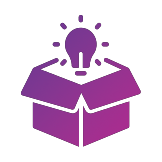| Processing Option |
Temperature |
Duration |
Packaging |
Shelf Stability |
Common Uses |
Retort
Uses very high temperatures for a relatively long duration, making the product shelf stable. Suitable for containers that can withstand high temperatures like cans and bottles. |
250°F - 300°F (High temperature) |
20 - 40 minutes |
Bottles, Cans |
Shelf stable |
Bottled beverages, canned drinks |
|
Ultra-High Temperature (UHT)
Also involves high temperatures but for a very brief period. Products must be aseptically packaged to ensure shelf stability. Common for beverages like milk and juices.
|
Above 275°F |
2 - 5 seconds |
Aseptically packaged cartons, Bottles |
Shelf stable |
Milk, juices, tea, coffee |
Extended Shelf Life (ESL)
Follows the UHT process but without aseptic packaging. These products have an extended shelf life compared to regular refrigerated products but still require refrigeration. Used for certain milk and coffee products.
|
Same as UHT (Above 275°F) |
Same as UHT (2 - 5 seconds |
Non-aseptically packaged containers |
Requires refrigeration but has extended shelf life |
Filtered milk products, coffee drinks |
|
Hot Fill (High Acid)
This process involves heating the beverage above 180°F for up to 2 minutes. The beverage is then filled hot into the container and cooled, ensuring shelf stability due to the combination of high temperature and the acidity which inhibits pathogen growth.
l |
Above 180°F |
Up to 2 minutes |
Bottles |
Shelf stable |
Juices, teas, sports drinks |
Basic Pasteurization (High Acid)
Similar to hot fill in terms of temperature but typically involves a different duration and potentially different temperature specifics, depending on the product. While this method effectively reduces microbial load, the products generally require refrigeration, especially if not filled aseptically.
|
Above 180°F |
Varies |
Requires refrigerated containers |
Requires refrigeration |
Smoothies, some juice products |







